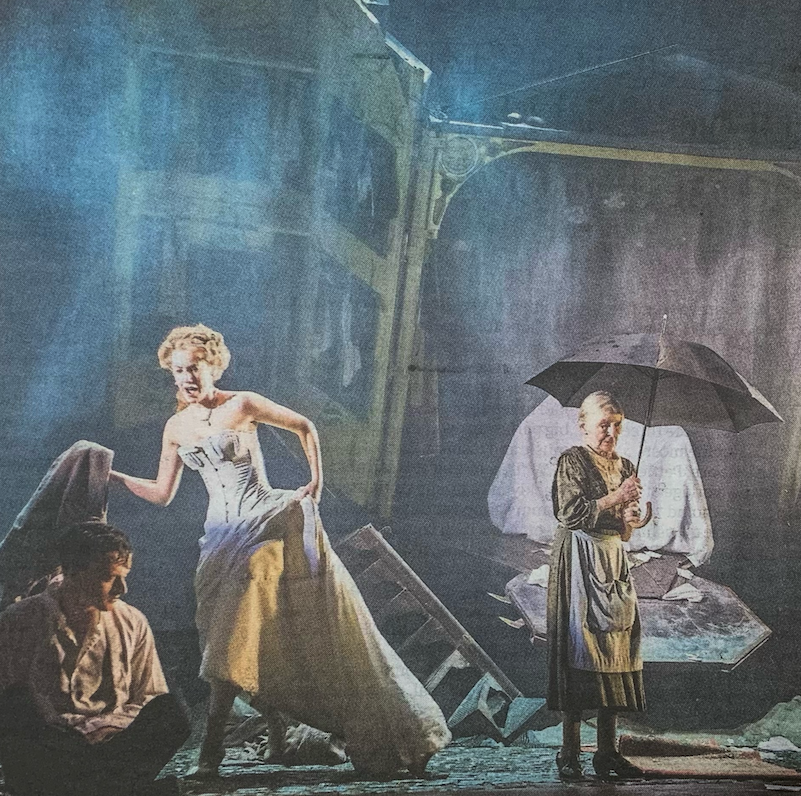I’ve had more than my fair share of major surgery over the last decade or so, including three spinal surgeries in the space of 15 days just this last September. I’ve been relieved to have been covered for this by a BUPA health care policy my parents began for me when I was still a teenager — and have continued on my own steam ever since.
On the one hand, it has meant I’ve not had to lean on the over-stretched resources of the NHS, leaving it free for others; and of course, private health care is an on-demand service, so there’s little waiting time for anything you need doing. (And yet, for emergency health care, as when I had a heart issue three years ago and had to have a stent put in, there is nothing like the NHS, either, whose service at London’s St Thomas’s Hospital was absolutely first-rate).
On the other hand, however, the more I’ve used BUPA, the higher my annual premiums have gone up. And yet I’m also locked in now: because if I was to give it up, should I want to return at any point I’d no longer be covered for existing conditions, like my back or heart, that have required treatment.

I thought of this yesterday as I read of how Broadway theatre producers have been successful in claiming on their premiums, following the lengthy interruption that has been caused by the shutdown of theatres last March because of COVID19. According to Philip Boroff’s Broadway Journal, The Ladies Who Lunch LLC — the producing entity behind the transfer of the West End’s revival of Company (pictured above) to Broadway — has received $8.85m from their insurers Chubb.
Producer Chris Harper told his investors that the payout is the result of of a “very robust policy” that “covers actual expenses incurred during the shutdown as well as lost profits.” Boroff’s analysis continues:
“Based on a recoupment chart, the $8,849,100 is equivalent to 80 percent of potential sales at the Bernard B. Jacobs Theatre over nine weeks. The cash lasts much longer: while waiting out the pandemic, the $13 million show spends a fraction of its normal weekly expenses, with its cast, crew and musicians off the payroll.”
Hunter Arnold, a lead producer of the Tony-winning Hadestown, is quoted saying, “We’ve been lucky to have policies written more irrefutably than other industries.” Institutional companies Roundabout Theatre Company (who were about to transfer another production from London, namely the Chichester/Hampstead revival of Caroline, or Change), and Lincoln Center Theatre, received $5m and $3.3m in performance disruption insurance. The general manager of Come From Away, Carl Pasbjerg commented: “If we didn’t have this coverage, it’s very dicey that we’d be able to even survive as a business, or as an industry.”
So all is good and well (or as good and well as they can be in the circumstances) for now. But what of the future? Insurers, writes Bosoff, have stopped offering new coverage for the performing arts for losses caused by viruses and communicable diseases. Bob Middleton, director of the Arts Insurance Program of Maury Donnelly & Parr, spells out what the future holds: “It’s a reality of life that producers and their investors will have to move forward with that [pandemic] exclusion. No one knows when the next pandemic will hit.” He says that insurers are acting like bears that got burned. “They’re not going to get near the fire anytime soon.”



In yesterday’s column, I looked at the life of film and stage actor Christopher Plummer, through the prism of (some of) the obituaries and tributes written about him. His passing on Friday, at the age of 91, was headline news, making it to the front page of many of Saturday’s papers (pictured above).
Other deaths pass less acknowledged. The Guardian’s obituaries page even has a separate panel for them: “Other Lives”, in which friends of people who’ve passed are invited to submit appreciations of their lives.

Saturday’s Guardian included one for Diana Payne-Myers (pictured above by Tristram Kenton in An Inspector Calls), a dancer who trained at Rambert, who was remembered by her choreographer friend Matthew Hawkins whose dance troupe she joined in 1988.
As he writes,
“Entering her 60s in the realm of postmodern dance and physical theatre, in the ensuing decades Diana worked with choreographers such as Lloyd Newson, Arthur Pita, Philippe Decouflé, Ian Spink, Wayne McGregor, Natasha Gilmore and Jonathan Burrows, each enjoying her compelling commitment and multiple skills.
She surprised us with her Buster Keaton-like affinity with props and obstacles. As the subversive housemaid Edna in the Stephen Daldry production of Priestley’s An Inspector Calls, she enjoyed multiple West End runs and tours. Astonishingly, the gig took her right up to the age of 91.”
Sibelius’s famous comment to a fellow composer, “Remember, a statue has never been set up in honour of a critic!” turns out to be not quite true: according to New Yorker music critic Alex Ross, “there is a statue to the literary critic Charles Augustin Saint-Beuve in the Luxembourg Gardens in Paris.”
But if this is an exception that proves the rule, critics are occasionally remembered in obituaries, at least, where their words are invariably extensively quoted — and sometimes are the subject, too, on their own deaths.
Last week there was one such, when British-born, long-time New York based critic and biographer John Heilpern was remember in the Daily Telegraph. But unlike Christopher Plummer — whose obituaries were already in the can so ready to be run in Saturday’s papers (and made the front pages that day, below) the day after his death — this one took nearly a month to appear: he died on January 7, and it ran last Monday (February 1).
At least The Guardian one was a bit more timely, running on January 20. And Michael Coveney, himself a veteran theatre critic and former colleague of mine who now turns out the very best obituaries of theatrical subjects in the business, puts it, “As a writer of zest, erudition and verbal felicity, he compares only to Kenneth Tynan and John Lahr.”
Heilpern, Tynan and Coveney himself all had their best days on The Observer; and like Tynan, who subsequently went to work at Olivier’s National Theatre as literary manager, Heilpern would go the National, too, working for a year as dramaturg and assistant (to Peter Hall), including working on Hall’s 1976 revival of Marlowe’s Tamburlaine, starring Albert Finney.
As well as being a critic, he was probably best known for his interview profiles, first for The Observer, then in New York, for Vanity Fair and the New York Observer (no relation to the British one, and which in 2006 was bought by Donald Trump’s subsequent son-in-law Jared Kushner; in 2017, he sold his stake to a Kushner family trust with his brother-in-law Joseph Meyer replacing him as publisher).
In a 2001 column there, he riotously announced the winner of his own theatre awards, including this one:
The Ben Brantley Award for the Most Amazing Observations in the History of Theater goes to … my goodness! It’s Ben Brantley, chief drama critic of The New York Times! The three-time winner of the prestigious award named after him is, of course, the inventor of the unique body-part aesthetic that first caught the Committee’s attention with his rave review of the performance of Maxwell Caufield’s penis – ”once again on unabashed display (every inch)” – in the unforgettable gay romp My Night with Reg.
Ben’s body-part aesthetic has also admired the “sly, sad” feet of Michael Gambon in David Hare’s Skylight, as well as – and most appropriately – allie Foote’s feet in The Last of the Thorntons (“Watching her feet move becomes enough to make you cry”). Then again, there was the “curving, flexing and shrugging” of Alan Bates’ shoulders in The Unexpected Man, though it was the masterly performance of Eileen Atkins’ right leg in the same play that wrong-footed those of us who feel that her left leg has always been the superior actor. “Shall we start with Eileen Atkins’s right leg?” he began his review. “It is, like her left leg, slender and shapely, and it has no doubt served this fine actress well over the years as something to stand on.”
Moving right along, the legs that Anna Friel stood on in Frank Wedekind’s Lulu – “Ms. Friel is standing on a pair of extremely lethal weapons” – as well as the epiphany of Sir Ian McKellen’s performing feet in Dance of Death, “shooting sparks in the dark mouth of mortality,” took the astonished eye this season. “Lumbering across the long stage of the Broadhurst,” our Ben wrote, “Mr. McKellen brings something frightening and majestic to the act of putting one wayward foot before the other …. ”
